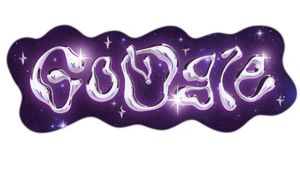JAKARTA - A new study sheds light on the science behind microscale concave interfaces (MCI), a structure that reflects light to produce beautiful and potentially useful optical phenomena.
"It's important to be able to explain how a technology works to someone before you try to adopt it. Our new paper defines how light interacts with micro-scale concave interfaces," said Buffalo University (UB) engineering researcher Qiaoqiang Gan. The study noted that future applications of this effect could include assisting autonomous vehicles in recognizing traffic signs.
The research was published online August 15 in Applied Materials Today, and is featured in the September issue of the journal.
Gan, a doctorate and professor of electrical engineering at the UB School of Engineering and Applied Sciences, led the collaborative study conducted by a team from UB, University of Shanghai for Science and Technology, Fudan University, Texas Tech University and Hubei University.
The first author is Jacob Rada, who holds a Ph.D. and electrical engineering student, and Haifeng Hu, Ph.D., professor of optical-electrical and computer engineering at the Shanghai University of Science and Technology.
This study focuses on a retroreflective material, a thin film consisting of polymeric microspheres, which are deposited on the sticky side of a transparent tape. The microspheres are partially embedded in the band, and the protruding parts form the MCI.
The white light shining on the film is reflected in a way that causes it to create concentric rainbow rings. Alternately, hitting the material with a single-color laser (red, green or blue, in the case of this study) produces a pattern of light and dark rings. The reflection from the infrared laser also produces a distinctive signal consisting of concentric rings.
This study describes this effect in detail, and reports on experiments using thin films in stop signs. The patterns formed by the material are clearly visible on a visual camera that detects light, and a LIDAR (laser imaging, detection and range) camera that detects infrared signals, said Rada, UB's first co-author.
"Currently, autopilot systems face many challenges in recognizing traffic signs, especially in real-world conditions," said Gan. "Smart traffic signs made from our materials can provide more signals for future systems that use LIDAR and visible pattern recognition together to identify important traffic signs. This may be useful for improving traffic safety for autonomous cars. "
"We demonstrated a new combined strategy to enhance the LIDAR signal and visible pattern recognition currently performed by visible and infrared cameras," said Rada. "Our work shows that MCI is an ideal target for LIDAR cameras, because of the strong signal it generates constantly."
Patents for retroreflective materials have been issued, as well as partners in China, with Fudan University and UB as patent holders. This technology is available for license.
Gan said future plans include testing films using different wavelengths of light, and different materials for microspheres, with the aim of improving performance for possible applications such as traffic signs designed for vehicles with future autonomous systems.
The English, Chinese, Japanese, Arabic, and French versions are automatically generated by the AI. So there may still be inaccuracies in translating, please always see Indonesian as our main language. (system supported by DigitalSiber.id)













